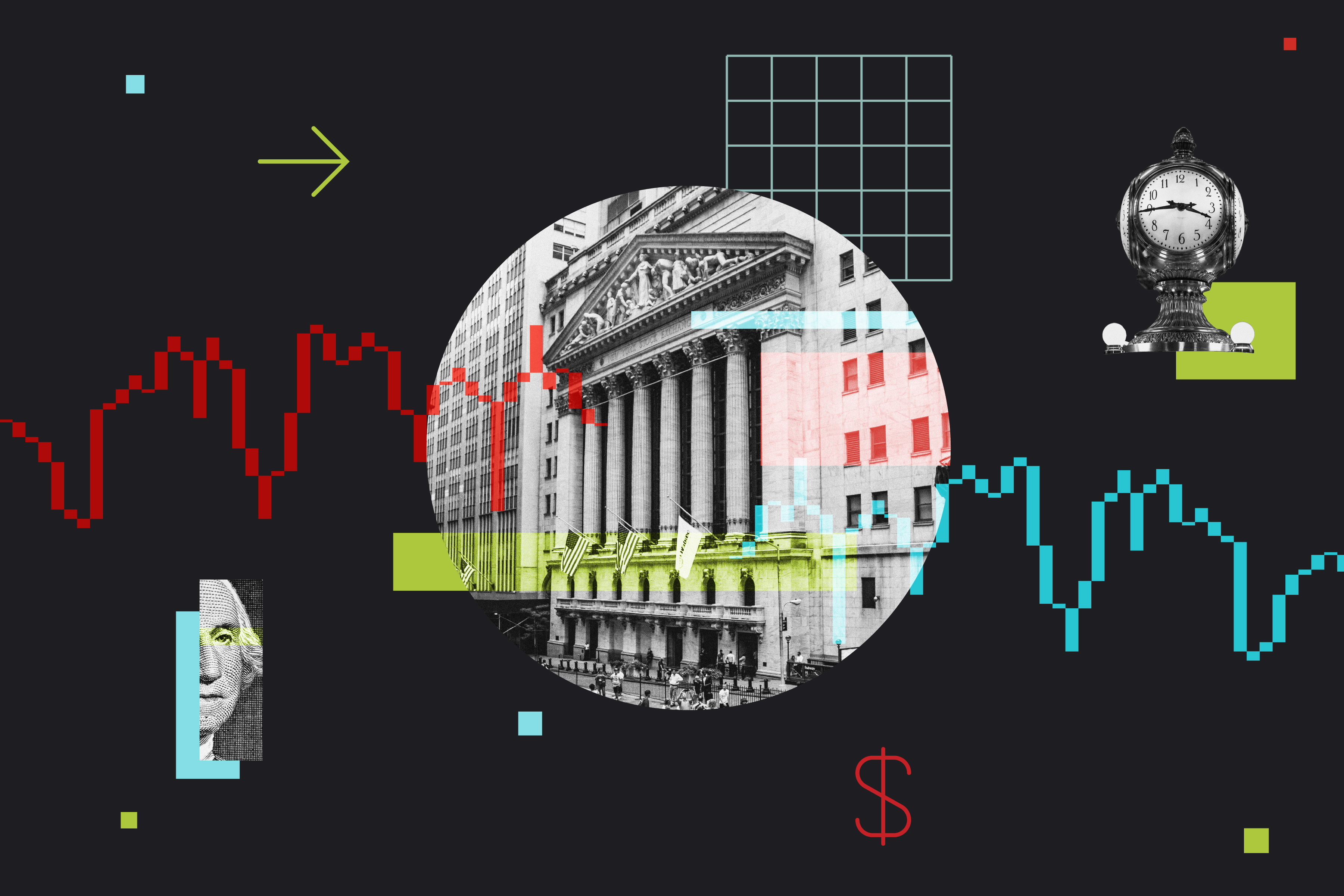Why Stocks Are Hitting Record Highs—and What Could Send Them Back to Earth
Optimism about the economy, inflation and the Fed are lifting stocks, but risks remain.

It’s a great time to be a stock investor.
The Morningstar US Market Index is up 11.4% for the year and nearly 29% over the past 12 months. Except for a pullback in April, the index has steadily reached one new high after another since January. The S&P 500 Index and the Dow Jones Industrial Average have also notched records, with the Dow passing the 40,000-point milestone last week.
Analysts say a strong economy, moderating inflation, robust corporate profits, and trust in the Federal Reserve are buoying investor confidence and helping stocks rise. However, they warn that trouble could be around the corner if any of those factors fall out of balance.
US Stock Market Performance
The US Economy Continues to Grow
According to Michael Arone, chief investment strategist at State Street Global Advisors, the biggest tailwind for stocks has been an unexpectedly healthy economy. A year ago, market watchers were sounding the alarm about a potential recession. Today, even with interest rates at their most restrictive level in decades, it’s full steam ahead.
Chris Zaccarelli, chief investment officer for Independent Advisor Alliance, attributes the surprising strength to consumer spending and a robust labor market. “Those two factors together are really what’s contributed to the economy staying out of recession,” he says.
GDP Growth
Arone points out that despite a recent slowdown in GDP growth over the past few quarters, estimates for growth in the upcoming quarter are hovering around 3.6%. “We won’t get that number, but it’s still a healthy economic environment.”
UBS Global Wealth Management analysts also aren’t worried about the modest slowdown in economic activity. In a research note published Tuesday, Solita Marcelli, chief investment officer, Americas at UBS, wrote that growth is “still relatively strong and is unlikely to deteriorate rapidly ... This is good news for risk assets, as a comfortable soft landing for the US economy should allow the Fed to start cutting interest rates later this year and at the same time support healthy corporate profits.”
Inflation Is Finally Trending Down Again
Much of the market’s gyration in the first quarter of the year (not to mention a major pullback in April) happened thanks to unexpectedly hot inflation prints in January, February, and March. Stocks fell as investors adjusted to the idea that the Fed might not ease policy as much or as drastically as expected in 2024.
CPI vs. Core CPI
But now, an encouraging April inflation reading means markets are breathing a sigh of relief. “The fact that [inflation] went back to the declining trajectory certainly encouraged investors,” Arone says.
Earnings Are Coming In Strong
As of Monday, 90% of the roughly 1,300 companies in the Morningstar US Market Index had reported earnings, with just under three-quarters of those surprising to the upside. Overall, earnings for the index are up 4.4% so far. “Companies continue to earn record profits,” says Zaccarelli.
Those profits are a major component of stock performance, and market watchers expect more growth. “Analysts are increasing their earnings expectations, which is somewhat unusual,” Arone says. “They usually lower them so companies can easily step over the bar.”
Earnings season also helped ease investors’ minds about the worryingly concentrated market, wherein stock price and earnings growth were confined to just a few mega-cap technology names like Alphabet GOOGL/GOOG and Microsoft MSFT. Now, UBS analysts see an “encouraging” trend of broadening profit growth, which if it continues “should support equity performance in the coming months.”
Investor Confidence In the Fed
These days, investors seem to see the Fed as a friend, not a foe. “There’s an expectation that should the economy falter, the Fed stands ready and able to lower rates,” Arone says. The target range for the federal-funds rate is 5.25%-5.50%. Investors may not all agree about whether that’s sufficiently restrictive to control inflation, but there’s no doubt that the central bank has room to ease policy should a major shock to the economy (particularly the jobs market) warrant it.
Treasury Yield and Federal-Funds Rate
Arone says investors shouldn’t worry so much about when the Fed will finally deliver the first cut of the easing cycle, or how many cuts that cycle will eventually entail. He says the more important question is: “Is the Fed ready and willing to cut rates should the economy falter? I think the answer is an emphatic ‘Yes.’ That puts in a layer of support for markets.”
What Could Derail the Market’s Bull Run?
Of course, the same factors driving markets higher could send stocks falling. For Arone, a major risk is the central bank keeping policy at restrictive levels for too long. “They’re waiting for greater confidence that inflation is trending toward 2%,” he explains. “What happens if they wait too long? Ultimately, I think that could cause a recession, or [the Fed] could break something in the capital markets.”
Zaccarelli points to elevated valuations as another risk. Until now, strong earnings from the biggest players in the market have meant that investors are willing to stomach higher prices. But that won’t last if the Alphabets and Microsofts of the world start missing their targets. “You’re effectively priced for perfection, and anything short of that perfection can cause a selloff,” Zaccarelli says.
The author or authors do not own shares in any securities mentioned in this article. Find out about Morningstar’s editorial policies.


/cloudfront-us-east-1.images.arcpublishing.com/morningstar/ZKF5TFZDABBAHA6TLTRJH2OZHE.jpg)
/cloudfront-us-east-1.images.arcpublishing.com/morningstar/YI7RBXKMXVAZDBWEJYQREEJJL4.png)
/cloudfront-us-east-1.images.arcpublishing.com/morningstar/24UPFK5OBNANLM2B55TIWIK2S4.png)